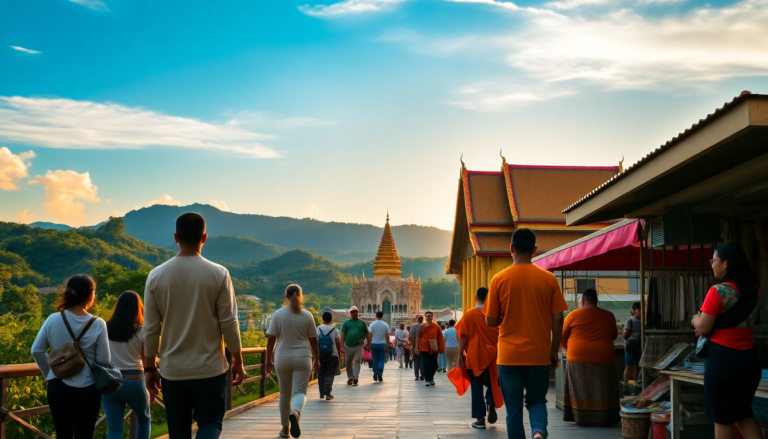Argomenti trattati
Luang Prabang, often regarded as the spiritual heart of Laos, is a captivating destination celebrated for its rich Buddhist heritage and stunning temples. Nestled at the confluence of the Mekong and Khan rivers, this UNESCO World Heritage site has recently attracted a growing number of visitors. However, this surge in tourism has sparked a conversation about the balance between welcoming travelers and preserving the city’s sacred traditions.
The impact of tourism on traditions
Once a hidden gem in Southeast Asia, Luang Prabang has transformed dramatically since the introduction of the high-speed Laos-China railway. This development has significantly boosted tourism, allowing more people to experience the city’s vibrant culture. Yet, many locals express concerns that this influx is leading to the commercialization of sacred rituals and a shift in traditional practices. Visitors often overlook the importance of respect and understanding when engaging with the local culture, particularly in relation to the morning alms-giving ceremony.
Anat Khamphew, a former monk, shares his perspective on the challenges brought by tourism. He highlights instances of disrespect towards monks and the appropriation of sacred symbols for social media content. In response to these issues, he has created educational resources aimed at promoting a more respectful approach to experiencing Luang Prabang’s unique culture.
Efforts to educate visitors
Khamphew is not alone in his mission. Several former monks have established tour-guiding companies focused on fostering a deeper understanding of the city’s Buddhist traditions. These initiatives emphasize the importance of respectful interaction with the local community while offering visitors an authentic experience. One such endeavor is Orange Robe Tours, which seeks to bridge the gap between tourists and the cultural practices of Luang Prabang.
Additionally, projects like LaLaLaos aim to support local youth by providing education opportunities tied to the cultural heritage of the area. This holistic approach to tourism not only enhances visitors’ experiences but also contributes positively to the local community.
Understanding Luang Prabang’s spiritual significance
Luang Prabang’s identity is deeply intertwined with its Buddhist roots. The city is home to around 1,000 monks and numerous wats, each carrying historical and cultural significance. The Phra Bang, a revered Buddha statue, symbolizes the arrival of Buddhism in Laos and is central to the city’s spiritual life.
Daily rituals, such as the Tak Bat, are integral to the community’s spiritual practice. The Tak Bat involves monks walking barefoot through the streets to collect alms, a tradition that not only supports their monastic life but also fosters community engagement. Unfortunately, as tourism grows, so do the challenges associated with these practices. Visitors sometimes present inappropriate offerings, which detracts from the ceremony’s sanctity.
Promoting respectful tourism
To address these challenges, former monk Bounthan Sengsavang has established a guiding business that emphasizes respect and awareness. He believes that those who have lived the monastic life are best suited to guide visitors through the intricacies of Buddhist culture. By focusing on a few key experiences rather than a rushed itinerary, Sengsavang encourages a more meaningful engagement with the community.
His tours often include opportunities for meditation and prayer, providing insights into the daily lives of monks. Through these interactions, visitors can learn about the principles of humility, gratitude, and the significance of living a simple life. This approach not only enriches the travel experience but also fosters a genuine connection between tourists and the local culture.
Reflecting on the journey
The experience of visiting Luang Prabang is more than just a sightseeing tour; it is an opportunity for personal reflection and growth. Engaging with the local culture, understanding its roots, and practicing mindfulness can lead to a deeper appreciation for the spiritual traditions that define the city. As tourism continues to evolve, the responsibility lies with both visitors and locals to ensure that Luang Prabang’s heritage is honored and preserved for future generations.

